
 |
|
|
Corn
Volume 58 Number 18 Date 11/21/2013 EUROPEAN CORN BORER - Larval surveys in the fall of 2013 found the second lowest population in 72 years, 0.04 borer per plant. The lowest state average recorded in the history of the survey was 0.03 per plant last year. Minor population increases from 2012 were charted in the southwest, south-central, southeast, northwest and north-central agricultural districts, and decreases occurred in the west-central and northeast areas. District averages in the central and east-central regions remained unchanged at 0.01 borer per plant, or just one larva per 100 plants. Only 18% of the 229 fields sampled showed evidence of infestation, while the other 82% had no signs of larval injury. The near-historic low number of corn borers observed again this year reflects the increased prevalence of Bt corn, which comprised 66% of corn acreage in the state in 2013. Another exceptionally low overwintering population indicates the spring moth flight and subsequent first generation of larvae are unlikely to pose a significant early-season threat to the 2014 corn crop. CORN ROOTWORM - Development was delayed this year by dry soils during the summer drought of 2012, which caused oviposition to occur at a lower depth in the soil profile, as well as historically cold, wet spring weather. The first beetles appeared later than normal, around July 11, and populations peaked during the third and fourth weeks of August. The state average population of 0.5 beetle per plant was a decrease from the 2012 average of 0.6 per plant, indicating beetle pressure was slightly lower in 2013. A few reports of heavy populations were received from northwestern counties where the survey found an average of 0.7 per plant and about ¼ of sampled fields had economic beetle counts above the 0.75 beetle per plant threshold. Averages across the northern and central counties were otherwise low. Results of the annual beetle survey suggest a lower potential for root damage to non-Bt continuous corn in central, north-central and northeastern Wisconsin next spring. A higher risk of damage is likely for the areas represented by red symbols in the accompanying map. BLACK CUTWORM - Moths began arriving in the state on April 15, first appearing near Janesville in Rock County. The first significant flight was registered in Dodge and Grant counties from May 6-7 and the primary cutting period was predicted to start by May 28. Spring planting delays and rampant weed infestations created very favorable outbreak conditions, but widespread cutworm problems failed to develop. The spring migration of 577 moths collected from April 16-June 5 was much smaller than last year's flight of 2,601 moths and damage to emerging corn was not as prevalent or severe as expected. WESTERN BEAN CUTWORM - Moth counts were the lowest in the nine-year history of western bean cutworm monitoring in Wisconsin. The 2013 trapping survey registered just 663 moths in 114 traps, or six per trap. This is considerably lower than in 2012 when a total of 3,290 moths were collected in 132 traps (25 per trap). The highest individual count for the eleven-week monitoring period was 60 moths near Montello in Marquette County. Possible explanations for the unprecedented decline are that larval populations were reduced by the 2012 drought or that high mortality occurred during the 2012-13 winter months. Moth counts have consistently declined since 2010 when the annual survey found the state record of 10,807 moths in 136 traps, or 79 per trap. CORN EARWORM - Migrants first arrived during an early flight that started by May 29 and continued throughout July. Moth numbers fluctuated during this period, with a weekly high count of 154 registered from June 7-13 near Janesville. Larvae resulting from the early flight appeared in vegetative corn by June 27. A subsequent and more destructive primary flight from early August to mid-September led to larger larval populations which required spray programs to prevent ear damage. Counts during the primary flight peaked from August 23-September 5 when the Fond du Lac County sites registered 309-613 moths per trap. Although the cumulative seasonal capture of 6,568 moths in 2013 was 38% lower than 10,656 moths in 2012, late-season infestations were more widespread this year compared to last year when most of the moths arrived after sweet corn was well past the critical silking stage. TRUE ARMYWORM - The first armyworm migrants appeared in black light traps on the night of April 15. Small flights of 35 or fewer moths occurred from mid-May to mid-June and light infestations were detected in corn by early June. A locally heavy flight of 301 moths was recorded at Janesville from June 26-July 10, but larvae of the second generation caused no apparent damage in surveyed fields. No economic injury to corn was attributed to armyworms this season. -- Krista Hamilton, DATCP Entomologist 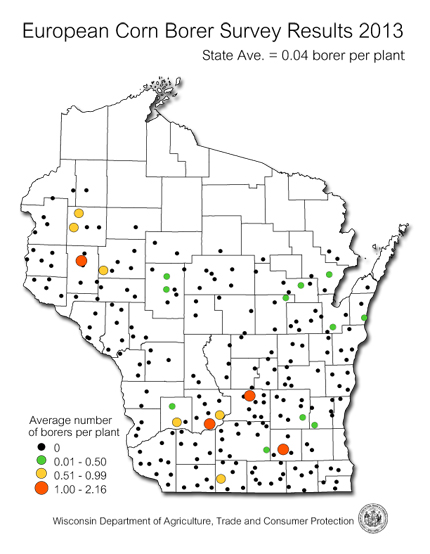
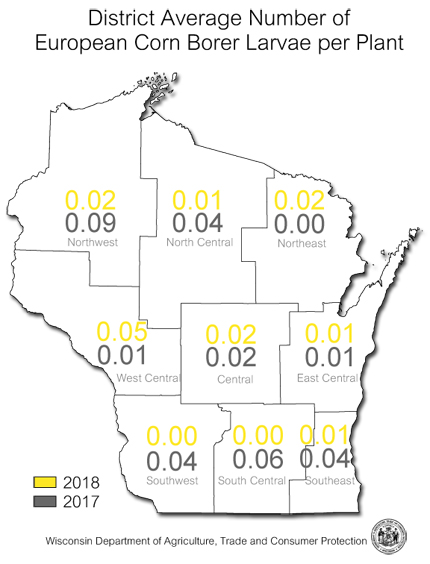
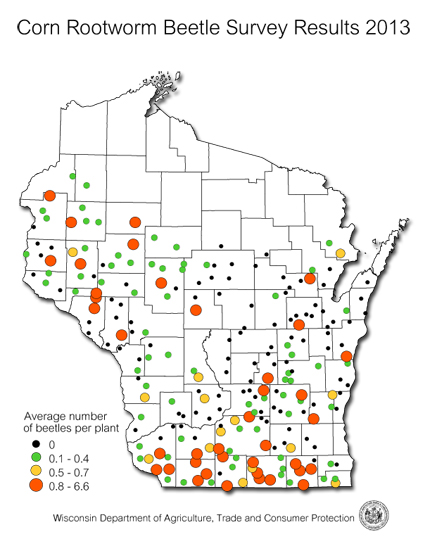
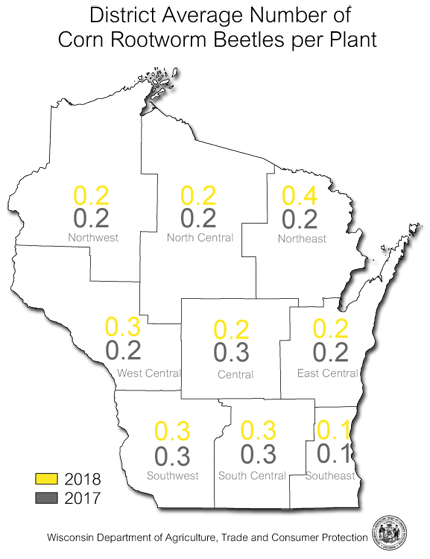
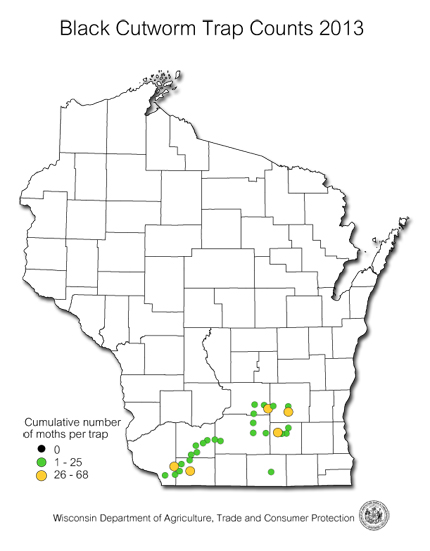
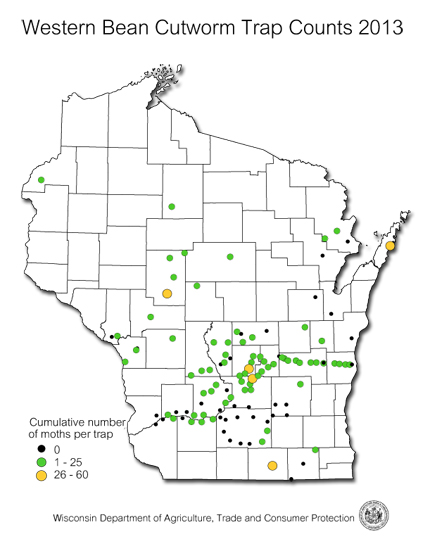
|
|
|